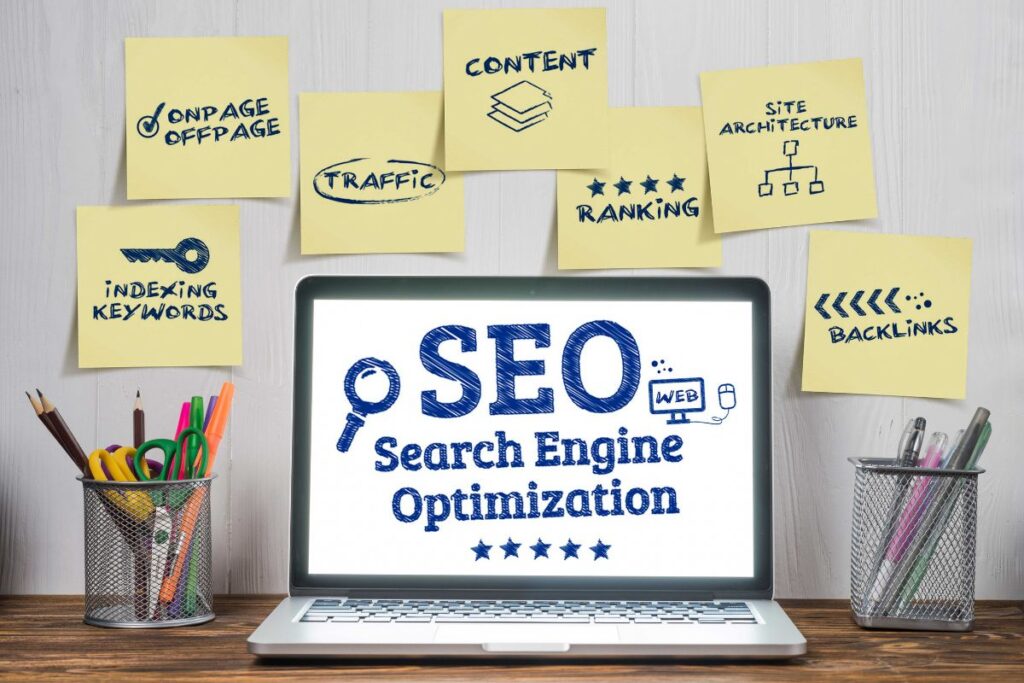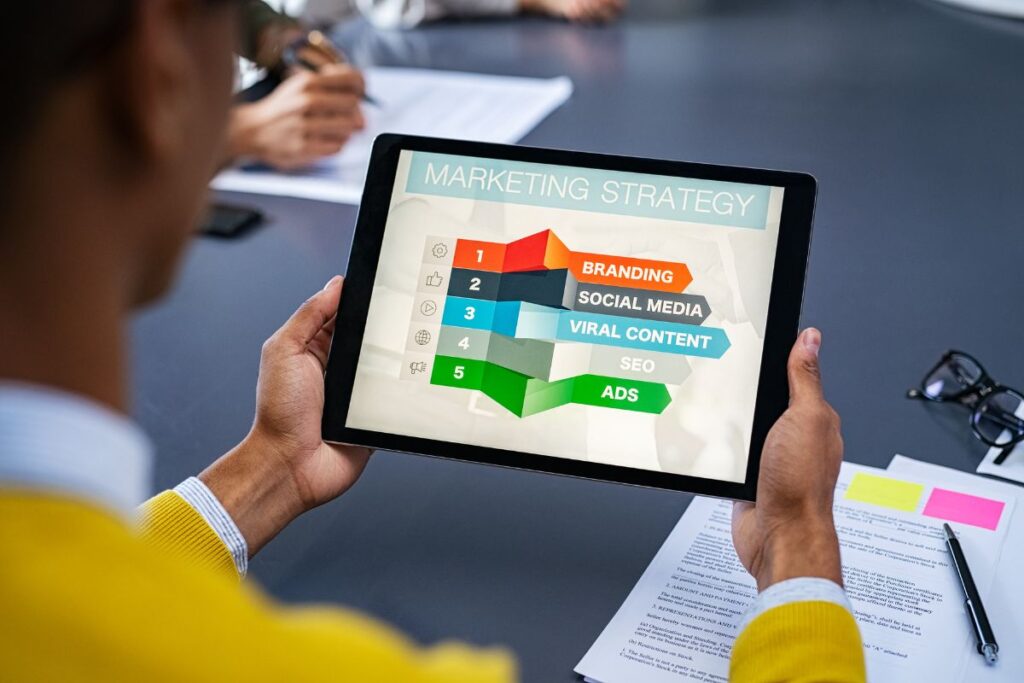Understanding SEO for Business
Search Engine Optimization (SEO) is no longer just a digital marketing buzzword—it’s the heartbeat of online business success. When done right, SEO drives organic traffic, enhances credibility, and leads to long-term growth without the recurring cost of paid ads.
Whether you’re a startup or a seasoned enterprise, business SEO strategies can level up your digital footprint in a saturated online market. Let’s begin by understanding how SEO has evolved and why it’s a necessity in 2025.
Why SEO Matters More Than Ever in 2025?
With the rise of AI search, voice assistants, and visual search tools, SEO has transformed. Google’s algorithm now rewards helpful, user-centric content, while penalizing keyword stuffing and manipulative tactics.
Key 2025 trends in business SEO strategies:
- E-E-A-T (Experience, Expertise, Authoritativeness, Trustworthiness) is king.
- Mobile-first indexing is fully enforced.
- Voice and conversational search is growing.
- Rich snippets, videos, and images dominate SERPs.
SEO is no longer optional—it’s your business’s gateway to visibility, authority, and conversions.
Tactic #1: Keyword Research Like a Pro
Effective SEO begins with choosing the right keywords—terms your ideal customer is already searching for.

Tools for Advanced Keyword Research:
Types of Keywords to Focus On:
- Short-tail: “Business SEO”
- Long-tail: “Best SEO strategies for small business 2025”
- LSI keywords: Related terms that help Google understand context
Integrate keywords naturally in:
- Titles & headings
- First paragraph
- Image alt text
- Anchor text
Remember, don’t just chase volume—target buyer intent and relevance.
Tactic #2: Create Quality Content That Solves Problems
Google’s helpful content update prioritizes useful, human-first content. Create pages and blog posts that answer real questions your audience is asking.
Tips to Craft High-Impact Content:
- Use real data and examples.
- Include visuals (images, charts, videos).
- Break up content with headings and lists.
- Address user pain points.
- Write for a Grade 7 reading level—clear, not simplistic.
Remember: Great content keeps users on your site longer—a big SEO ranking factor.
Tactic #3: On-Page Optimization Essentials
Don’t let small details ruin your rankings. Mastering on-page SEO ensures your content is crawled, indexed, and ranked properly.

On-Page SEO Checklist:
- Title tags under 60 characters, with target keyword
- Meta descriptions that encourage clicks
- Header hierarchy (H1-H6)
- Optimized images with descriptive alt text
- Internal linking to related pages
- Clean URLs (no gibberish)
Example:
Bad URL: www.bizsite.com/page1?id=abc123
Good URL: www.bizsite.com/business-seo-strategies
Tactic #4: Mobile-First and UX Design
Over 70% of users access websites on their phones. If your site isn’t mobile-friendly, you’re losing traffic and rankings.
Mobile SEO Must-Haves:
- Responsive design
- Clear fonts and buttons
- Fast mobile load time
- Thumb-friendly navigation
Great UX doesn’t just please users—it reduces bounce rates and boosts conversions.
Tactic #5: Speed Optimization: Every Second Counts
According to Google, 53% of users leave if a mobile site takes over 3 seconds to load.
Tools for Site Speed:
- Google PageSpeed Insights
- GTmetrix
- WebPageTest
How to Speed Up Your Website:
- Compress images
- Use lazy loading
- Minify CSS, HTML, and JS
- Enable browser caching
- Use a CDN (Content Delivery Network)
Tactic #6: Technical SEO for Crawling and Indexing
Even the best content fails if search engines can’t find it.
Technical SEO To-Dos:
- Create an XML sitemap
- Submit it via Google Search Console
- Use a clean robots.txt
- Eliminate crawl errors
- Fix broken links
Structured site architecture = better indexing and faster SEO results.
Tactic #7: Build High-Quality Backlinks
Links from authoritative sites still play a massive role in SEO rankings.

Link Building Strategies:
- Guest posting on niche blogs
- Digital PR campaigns
- Creating shareable infographics or stats
- Engaging with industry forums and communities
Avoid spammy directories or link farms. Google’s Penguin update still punishes bad backlinks.
Tactic #8: Local SEO for Small Businesses
Local businesses must optimize for geo-specific searches and map results.
Steps for Local SEO Success:
- Claim and verify your Google Business Profile
- Use NAP consistency (Name, Address, Phone)
- Get local citations (e.g., Yelp, YellowPages)
- Encourage customer reviews
- Use local keywords like “plumber in Austin”
Want to go deeper? Here’s an external guide from Moz on Local SEO.
Tactic #9: Leverage Schema Markup and Rich Snippets
Want your listing to stand out? Add schema markup to unlock rich results like FAQs, star ratings, and events.
Types of schema:
- Article
- Product
- Review
- How-to
- Local Business
Tools like Google’s Structured Data Markup Helper make this easy, even for non-coders.
Tactic #10: Monitor, Analyze, and Adjust
SEO isn’t a one-and-done task. Use tools to track performance and adapt strategies accordingly.

SEO Tools You’ll Need:
- Google Analytics
- Google Search Console
- Ahrefs
- Screaming Frog
Check:
- Traffic trends
- Bounce rate
- Keyword rankings
- Top-performing content
SEO is a long game, but those who stick with it win big.
Common SEO Mistakes to Avoid
- Ignoring mobile users
- Overusing keywords
- Not updating old content
- Forgetting image optimization
- Buying low-quality backlinks
- Skipping metadata
Conclusion: Start Ranking Higher Today
SEO is a marathon, not a sprint—but it’s the most cost-effective digital strategy you’ll ever invest in.
Implement these business SEO strategies step by step. Track results. Tweak your tactics. And soon, you’ll enjoy more traffic, leads, and growth—organically.
Whether you’re a local bakery or a SaaS startup, SEO is your digital superpower.

FAQs on Business SEO Strategies
1. How long does SEO take to show results?
Most businesses see significant results within 3 to 6 months, depending on competition and effort.
2. Can I do SEO without hiring an agency?
Yes, especially with tools like Ahrefs or Yoast. But a professional can accelerate results.
3. Is blogging still effective for SEO?
Absolutely. Regular blogging with targeted keywords helps boost rankings and build authority.
4. What’s the best free SEO tool?
Google Search Console. It offers insights into performance, indexing, and keyword data.
5. How important are backlinks today?
Very. Quality backlinks act as votes of trust to search engines, improving authority and rankings.
6. Does social media help SEO?
Indirectly. While not a ranking factor, it drives traffic and shares—impacting visibility and link potential.

